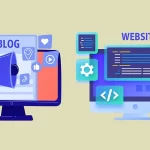Mentorship in the Social Media Era
In our professional lives, mentors make a difference. Whether you’re looking for that promotion or need help starting your own business, mentorship can often be the key ingredient to success.
One of the places mentors make the biggest difference is when it comes to entrepreneurship. Most entrepreneurs can tell the story of a mentor who offered help at the exact right moment. The wisdom from these smart, altruistic helpers who’ve been there before can be the difference between your venture’s success or failure.
In today’s digitally-connected world, it’s easier than ever to connect with the movers and shakers in your industry and solicit advice and mentorship. So how do you use social media tools to find the mentor your business needs? And what’s the etiquette for using tools like Twitter, Facebook and LinkedIn to connect? Let’s take a look.
Find A Mentor On Social Networks
Finding a mentor on social media is a process. Tweeting “Be my mentor?” to the head honcho in your chosen industry is unlikely to get you the close, personal mentorship relationship you need. Instead, the first thing you’ll need to do is truly know your industry. This should be a snap, because knowing your chosen industry is essential for any startup venture or entrepreneurial endeavour.
Part of knowing your industry is knowing the big wigs. These heavy hitters are undoubtedly active on social media, so start following them on the channels they frequent. Once you’re following, it’s time to connect. Reach out over social media, but don’t go overboard. Leave a comment on a post prompting a discussion, re-tweet an interesting article and look for opportunities for personal connection.
Once you’ve built up a rapport with your mentor target, only then should you ask for advice and mentorship. Now this person knows you, knows a bit of your story and already has positive associations with you because you’ve given their content and business a signal boost.
You wouldn’t go up to a stranger and ask to be mentored, and the last thing you want is to come off as desperate. The same etiquette is true in the world of social media as in the world at large: Build a personal connection, help others and they’ll be more likely to want to return the favour.
Connect Personally Using Social Media
Just because you and your ideal mentor have exchanged a few tweets back and forth doesn’t mean your mentorship relationship is written in the stars. Social media should be used to establish a connection, but deepening your relationship isn’t up to Facebook. You need to really reach out, ask for mentorship and form a personal connection.
Technology such as Skype, instant messaging systems and social media make it easy to quickly connect with your mentor. Whether your mentor sends you long, informative emails or spends 10 minutes talking with you on Skype — it’s the quality of the interaction that matters. Someone might agree to mentor you, but if you don’t form a personal connection, this new bond won’t get you very far.
Bring Groups Together, Plane Rides Not Required
One-on-one mentorship is great, but so is becoming part of a community. Social media makes the community experience portable, meaning you can take the ability to crowdsource and carry it around in your pocket. Best of all, it also means airfare isn’t needed to spend time with a group of like-minded business leaders and entrepreneurs.
You can start discussions on LinkedIn, crowdsource the answer to a business question on Quora or even tap into your local startup community with the help of Meetup. Best of all, even if your group isn’t located in your backyard, you can still connect personally.
Video conferencing, discussion groups and even Twitter chats allow vast groups of people to connect in real time. Someone in this new online family might lead to an investment opportunity, a new idea or even just a shoulder to lean on when your entrepreneurial path gets bumpy.
Go To Class In Your Pyjamas
Mentors and peers are great with advice, but sometimes you just want to grab a notebook and pencil and learn the old-fashioned way. Now, you don’t need to set foot in a classroom to learn a new skill or expand your knowledge base.
Social media and technological tools are making online learning easy. You can view learning material online, take part in a real-time seminar or even watch YouTube tutorials to learn from those who have come before.
SOURCE: Mashable








